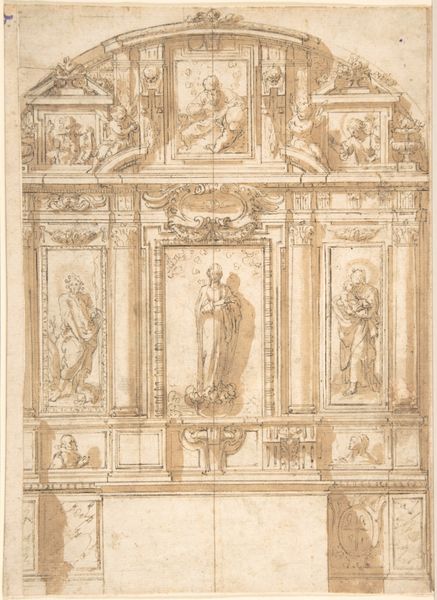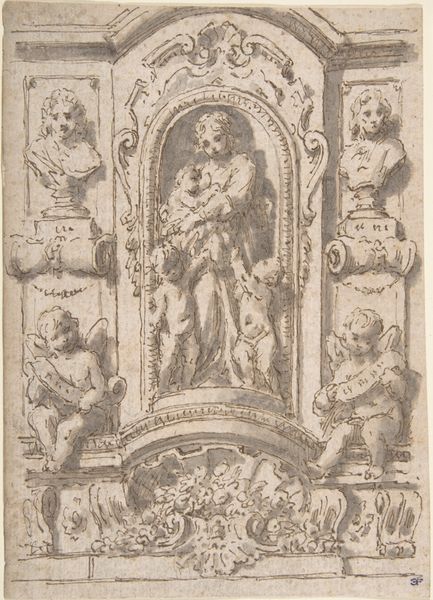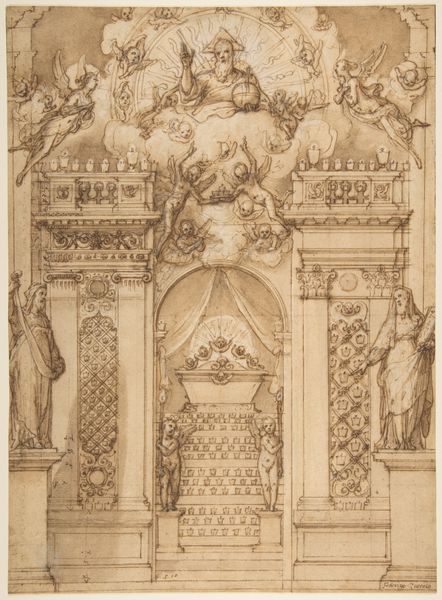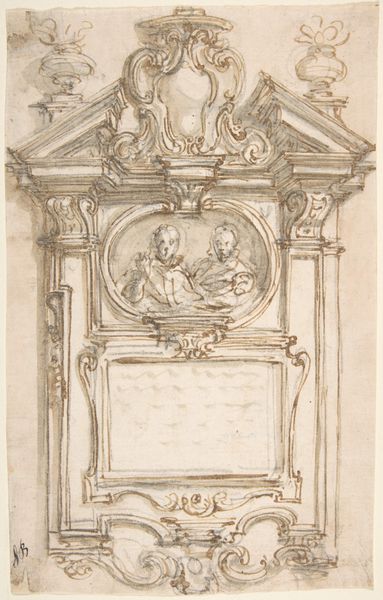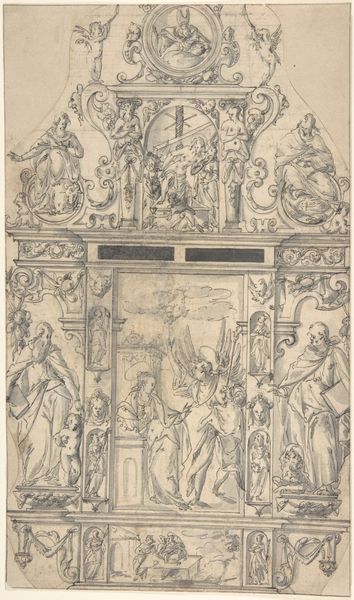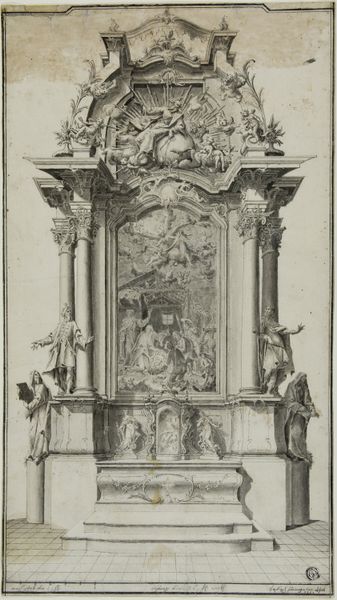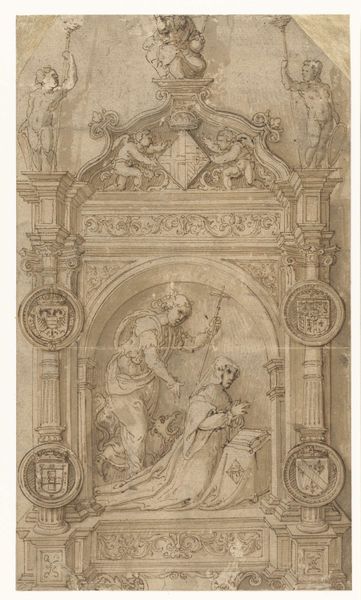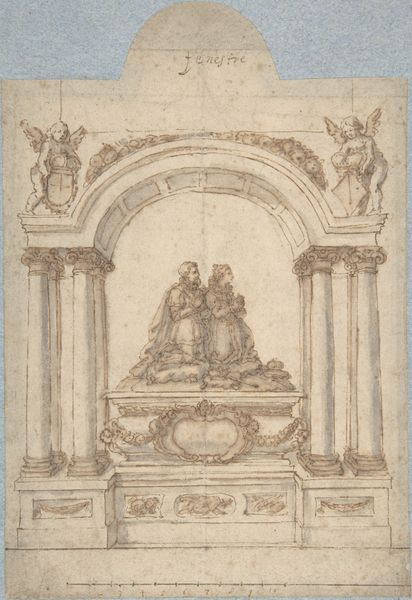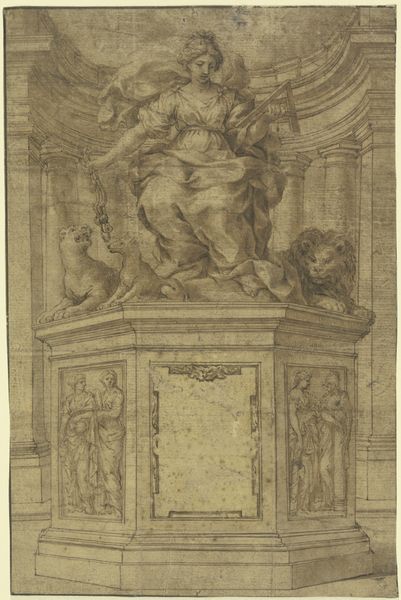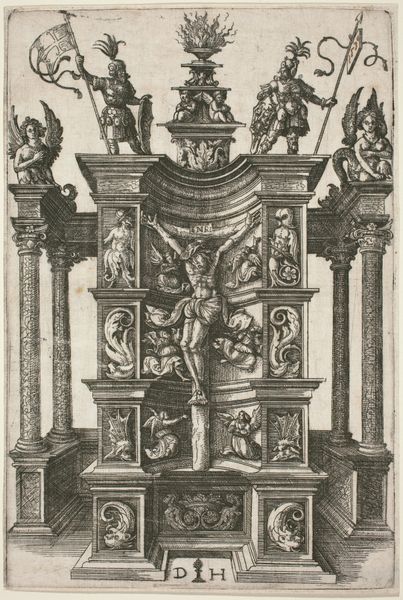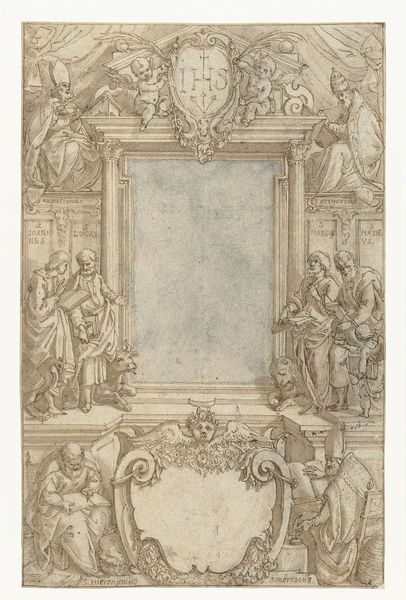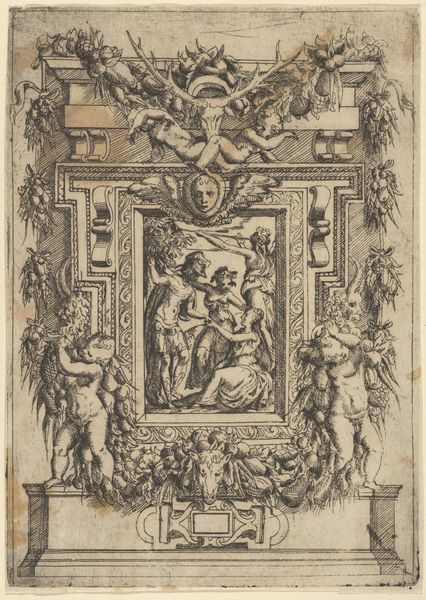
Design for an Altar with a Painting of the Adoration of the Shepherds and God the Father Above 1652 - 1725
0:00
0:00
drawing, pencil
#
drawing
#
baroque
#
pencil
#
history-painting
#
italian-renaissance
Dimensions: sheet: 9 3/4 x 5 7/8 in. (24.7 x 15 cm)
Copyright: Public Domain
Editor: We're looking at Giovanni Battista Foggini's "Design for an Altar with a Painting of the Adoration of the Shepherds and God the Father Above," dating from somewhere between 1652 and 1725. It’s a drawing in pencil. What a detailed and ornate design! The use of pencil makes it feel somehow intimate despite the grandeur of the subject matter. What symbols stand out to you? Curator: Immediately, I see a hierarchy embedded within the image itself. The eye is drawn upward, from the earthly realm of the shepherds adoring the Christ child, toward the divine presence of God the Father surrounded by angels. It speaks to the prevailing belief systems of the time, a visual manifestation of the Great Chain of Being. Editor: Interesting. I was also struck by the classical architectural elements surrounding the central image. Do they carry any specific weight in terms of the work's meaning? Curator: Absolutely. Those baroque columns are not merely decorative. Columns have long represented strength and support, not only literally, but symbolically. In this context, they act as visual metaphors for the Church itself, as a pillar of faith and a structure that supports the spiritual lives of believers. Notice also how the columns frame the scene, drawing our attention to the pivotal event taking place within: the incarnation of God on earth. Editor: So, everything, from the placement of figures to the architectural design, works together to reinforce the religious message? Curator: Precisely. This design isn't simply about depicting a biblical scene, but about conveying profound theological truths through a carefully constructed visual language that relies heavily on symbolism and iconographic tradition. What will endure beyond the artwork? Editor: Thinking about this as more than just an illustration really broadens its impact. I can see the layers of cultural meaning woven into every aspect of it. Curator: And hopefully, the symbolic function art and architecture plays.
Comments
No comments
Be the first to comment and join the conversation on the ultimate creative platform.
